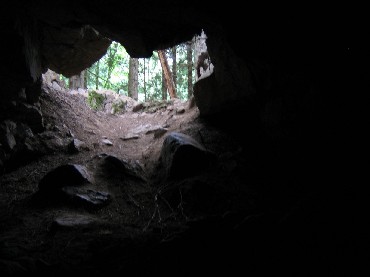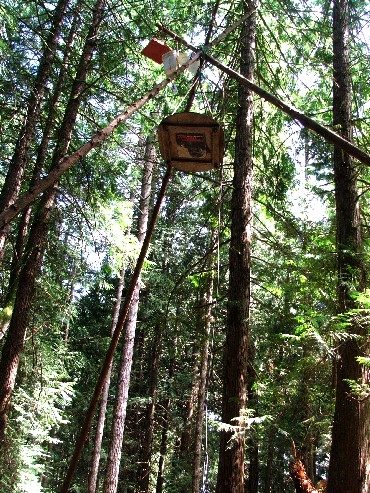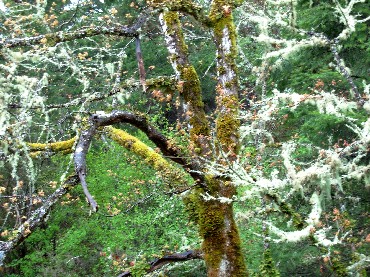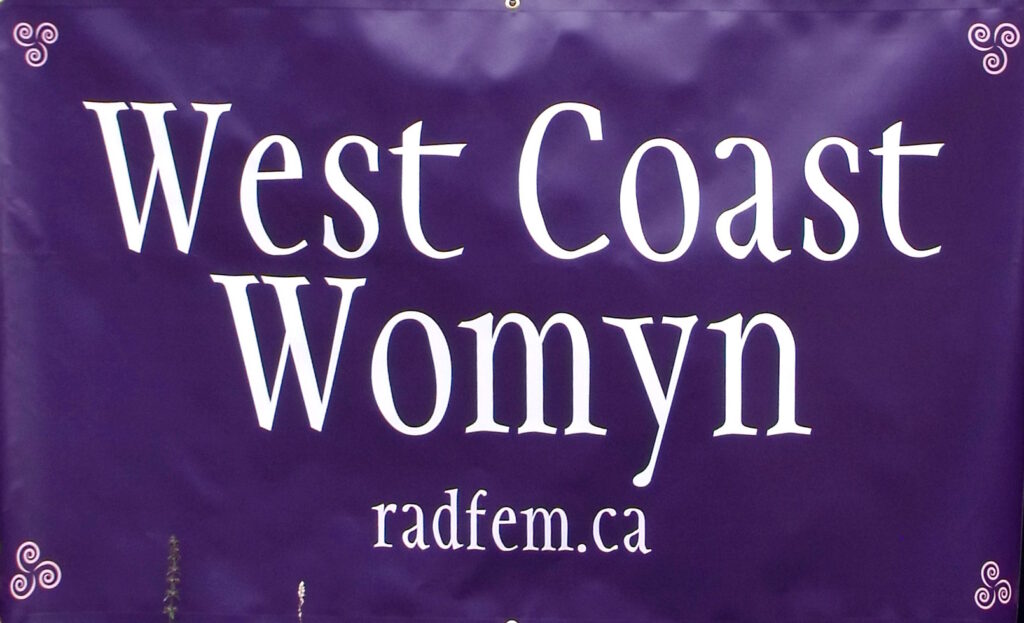It’s the first weekend in September and I’m back at the tree sit near Victoria, BC. With the cold wind and light rain, it still feels like April. Almost five months after I first climbed up to the platform, the camp at the end of the road now boasts a motley assortment of tarps, tents, bikes, tables, stoves, coolers, and gear bags stretching across the hill above the tree house.

Langford cave. Photo: Kevin Slagboom
The legendary Langford Cave is guarded by a thirty-foot tripod over the entrance. In June, an elder from the Songhees Nation informed the campers and the city that the cave – a 40-meter-long karst cavity – is a place of cultural significance for indigenous people. He said the cave has a name in the Songhees language, but the Songhees keep their spiritual practices secret and he is not permitted to reveal the name of the cave.
This was a few weeks after city contractors showed up with a bulldozer, rock drills and welding equipment, intending to bulldoze a path to the cave and close it off with a concrete and metal grate. A dozen campers met the crew at the end of the road and politely refused to move aside and let them go to work. The tripod went up soon after, and the crew has not returned. Members of the Songhees and Tsartlip nations thanked us for defending the cave

Tripod over the cave. Photo: Clare A.
A couple hundred people have visited over the summer, including cavers, neighbours, botanists and birders. The bluffs above the camp are home to a rare and flourishing Garry Oak meadow. The oaks survive in a few undisturbed pockets on southern Vancouver Island, co-existing with wild camas and other wildflowers on rocky park-like knolls.

Garry Oaks covered with moss and lichen on the bluff above Langford Cave.
The sun has gone down and it’s dark under the tree canopy. I’ve strapped on the harness and clipped it to the rope that’s anchored sixty feet above, and I’m ready to climb the cedar again. Physically I’m in worse shape than last time, thanks to a flare-up of the chronic pain and weakness all down my left side. But so what? Paraplegics are climbing mountains these days. I could always sit at home and feel sorry for myself, but what good would that do?
I shimmy up the rope with no problems (hooray!) and clamber onto the platform. The tent and tarps look just the same. A couple dozen people have stayed up here since then, and everything is stowed away neatly, but I can sense their presence. There is new graffiti on the plywood.
Just because you fell and died
Doesn’t mean you didn’t fly.
— Lurch
Under the tarp below, the lamp is lit and a couple visitors are telling the campers about the roadkill deer they’re eating. This is the third or fourth deer they’ve found on the highway in the last couple months. Dozens of young people in Victoria survive without jobs or welfare by dumpster-diving and scavenging, and a few come out to the camp whenever they need a place to sleep or hang out.
Cars and trucks whir past on the highway. I turn on the flashlight and write. The small circle illuminates the white tarps and the red cedar tree that forms the centrepiece of the platform. The blackness beyond presses in. Eventually I switch off the light, crawl into the sleeping bag and sleep, deeply and completely.
Labour Day is cool and rainy – no surprise. Two new volunteers have arrived, full of enthusiasm for the camp and the tree sit. I rappel down to the ground and join them for breakfast – corn flour pancakes and tea made from vanilla leaf and nettles growing on the hill.

The proposed interchange route (in black) would blast right through the cave, the wetlands, and part of the Garry Oak bluff. Composite image courtesy of Rob Bowen.
Langford city staff told us last week that the interchange is going ahead as planned in spite of the outcry over protecting the cave, the bluffs, the wetlands, and endangered species in the area. The staff said they see no reason to consult with the public about the interchange project. We don’t agree, so we’re launching an unofficial Community Environmental Consultation this month.
The police are leaving the camp alone, but it seems clear that civil disobedience by itself won’t stop this misguided interchange project. The city could order us out at any time. That’s why I’ve been working my ass off consulting with lawyers, experts, activists and community groups. That’s why we’re bringing all their concerns forward in public – to put the government on notice that it’s no longer acceptable to disregard rare species, First Nations’ rights, and the will of the community when fast-tracking massive highway development projects. I’ll keep you posted as the battle grinds on.

